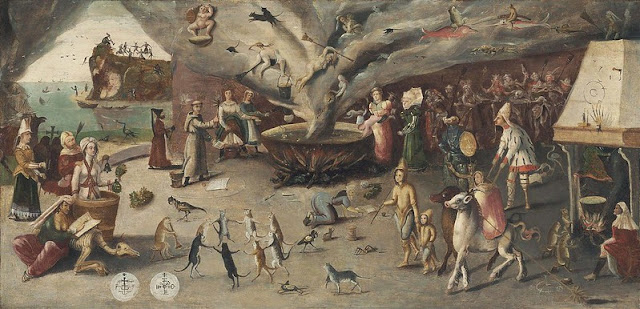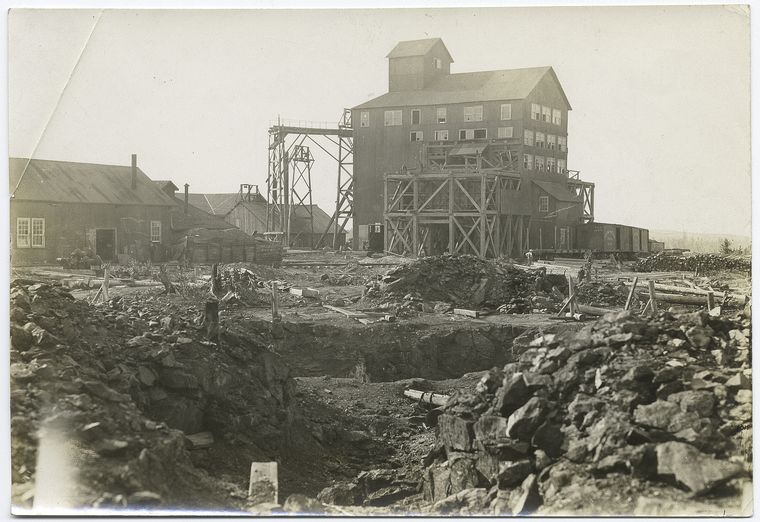 |
| "Philadelphia Inquirer," March 13, 1932, via Newspapers.com |
This blog has featured several stories involving mysterious fires. However, the most famous, and probably the most well-investigated, case of this sort took place in the town of Bladenboro, North Carolina, in 1932.
One afternoon in February the family of Charles H. Williamson was sitting quietly in their parlor, the picture of Norman Rockwell harmony. The calm was suddenly broken by a neighbor rushing into their midst, shouting, "Your house is burning up!" The startled family followed him into their dining room, where, sure enough, a window-shade and some curtains were ablaze.
Fortunately, the group was able to quickly tear them down and smother the flames. Then, their shock turned to sheer puzzlement. The wood around the burned items was completely untouched. And how did the fire start at all? No one had lit a fire in the room for weeks. No one had smoked there. There were no inflammable chemicals in the house. The neighbor who had alerted them had had a clear view of the dining room all afternoon, and had not seen any stranger in the vicinity of the house.
All the Williamsons could do was shrug and walk back to the parlor. No sooner had they returned that another fire broke out in another window of the dining room. It was the same story: there were no signs of anything that could have set off the fire, and the window sash appeared untouched by the flames.
Things were clearly getting weird. The family summoned friends and neighbors to help them find a solution to the mystery. They all inspected every inch of the house, hoping to find something--anything--that might explain these baffling bonfires. Nothing at all suspicious was found.
That night was without incident, which left the Williamsons with a great feeling of relief. The next morning, they went off to church with the cheery assumption that the previous day's event was a one-off--peculiar, yes, but nothing they would ever see again.
They returned home from the service happily anticipating their Sunday lunch. While the others began to assemble in the dining room, Mrs. Williamson went upstairs to her bedroom. And immediately began screaming.
An understandable action, considering that she had found her bed on fire.
The family rushed into the room, grabbed the blazing bedspread, and beat out the flames. They were stunned to see that--like the window sashes on the previous day--the rest of the bed was completely untouched by the fire.
A few minutes after this incident, one of the Williamson daughters, Katie, opened a closet door, and found that a pile of paper dress patterns was ablaze. The flames were quickly extinguished--the family was getting a lot of practice at putting out fires--and they saw that nothing else in the closet had been touched by the fire. Shortly after that, Katie went into the dining room, where she saw smoke coming from a cardboard box containing a fruit cake.. She opened it, and saw that the paper wrapping around the cake was on fire. However--I think you know by now what's coming--neither the cake nor the box was so much as singed.
Naturally, word of the strange goings-on at the Williamson home swiftly spread through Bladenboro. Naturally, the house drew a crowd of curiosity seekers and amateur sleuths eager to find a solution to the mystery. Naturally, none of these people were any help whatsoever.
The Williamsons' uninvited audience was not disappointed, however. A group of some fifteen people were treated to the sight of a second closet fire. A pair of pants hanging inside was on fire. Nothing else in the closet was at all damaged. On one occasion, while some of the Williamsons and a few out-of-town guests were sitting in one of the bedrooms, they all saw the bed suddenly burst into flames right in front of their eyes.
Local firemen, electricians, and other experts in such matters struggled to come up with an explanation for all this. A local doctor suggested that "a combination of certain gases in the air" might be responsible. However, tests of the air in various parts of the house showed nothing abnormal. The electricity to the house was cut off, on the chance that the fires were set by some short in the wiring. A theory that the fires were being deliberately set for insurance purposes fizzled out when it was discovered that the house was not insured. Could bolts of lightning have entered the house and set off the fires? (The area had not had any lighting strikes for months.) Perhaps dried phosphorus, that was then commonly used in rat and mouse traps, was responsible? (It turned out that nothing of the sort had ever been used in the house.) Were the Williamsons staging this for publicity? If so, why?
While everyone was still debating the matter, the phantom firebug upped its game in an alarming way. Katie Williamson was standing in one of the rooms with some of her friends, when--seemingly out of nowhere--her skirt burst into flames. She was able to immediately tear it off and stamp out the fire. It was found that the skirt had no damage to it, other than one small hole.
After this incident, the Williamsons sensibly ran for the exits. They removed all their possessions out of the house and took lodgings in the home of a friend. After an uneventful night, Mr. Williamson decided the family had to take the chance and move back into the house. It seemed ridiculous to be chased out of their own residence by an intangible mystery.
The family had scarcely resettled in their home when--as if to taunt them--another bedspread suddenly exploded into flame. Then the dining room tablecloth followed suit. As usual, nothing around these articles was so much as singed.
All told, nearly thirty separate fires were recorded in the home. Thankfully for the Williamsons, after a few days the outbreaks ceased as suddenly and inexplicably as they had started, but leaving their cause forever a puzzle.



.svg/1024px-Welsh_Dragon_(Y_Ddraig_Goch).svg.png)












.jpg?20180305135426)



